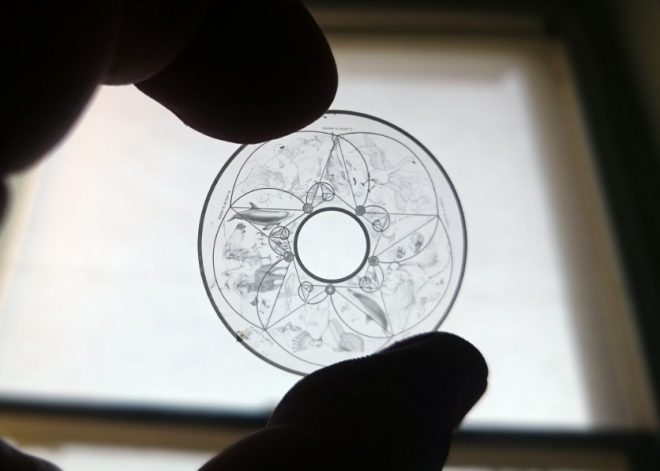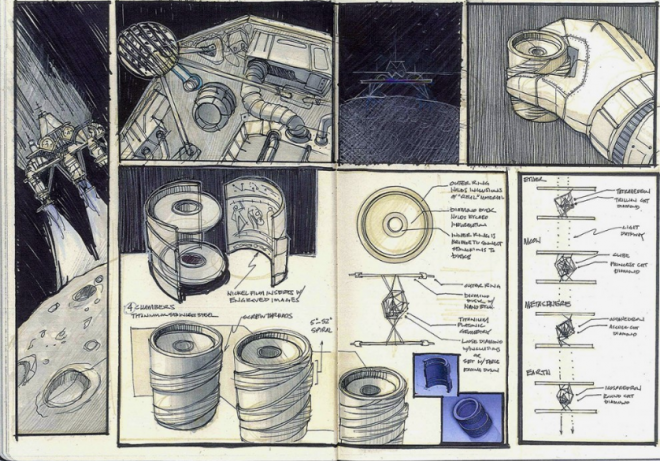An artistic inspiringly homage to the moon
The Moon Arts Project
During the first Moon landing, the world stood transfixed in amazement. In the intervening decades, only 10 more people set foot on the Moon, leaving the future of tangible space exploration in question. We need to reawaken the sense of sublime wonder fundamental to our relationship with the Cosmos and create meaningful artifacts that extend the reach of the human footprint.
In 2016, Carnegie Mellon University’s Robotic Institute will send a rover to the Moon in competition for the Google Lunar X Prize. Legendary roboticist and founder of Astrobotic, Inc., William L. “Red” Whittaker, has invited a team of artists to join this expedition and has reserved payload space for such a meaningful artifact. Whittaker’s consortium has already won $1.75 million from Google in support of their plans to reach the Moon nearly ensuring the viability of their quest. During this mission, the lander, which will remain on the moon indefinitely, will house a non-encyclopedic view of humanity and life on earth – the MoonArk – intended to be a Cultural Heritage Site.
 Led by renowned space artist and art professor at Carnegie Mellon (“CMU”), Lowry Burgess, a team of international artists, scientists, designers and engineers involved with emerging media, new and ancient technologies, as well as hybrid processes have developed a deep human gift and gesture for the Moon. The MoonArk contains elements representing all the Arts and Humanities (art, architecture, design, music, drama, ballet, and poetry) – all engaging the most advanced sciences, engineering, technologies, and material science from the nano- and micro- scales towards the infinite scales, including ongoing deep space radio-wave transmissions. This gift will take the form of four elaborately constructed chambers that each hold two engraved sapphire disks, metal sculptures, microcapsules containing evidence of life on earth, high resolution dye sublimation imagery on metal foil, and a variety of information in the form of data, imagery, and physical traces. Together, these four chambers will occupy no more than 6 ounces of payload – an extreme technical feat. A twin of these chambers will also be constructed to be exhibited on Earth.
Led by renowned space artist and art professor at Carnegie Mellon (“CMU”), Lowry Burgess, a team of international artists, scientists, designers and engineers involved with emerging media, new and ancient technologies, as well as hybrid processes have developed a deep human gift and gesture for the Moon. The MoonArk contains elements representing all the Arts and Humanities (art, architecture, design, music, drama, ballet, and poetry) – all engaging the most advanced sciences, engineering, technologies, and material science from the nano- and micro- scales towards the infinite scales, including ongoing deep space radio-wave transmissions. This gift will take the form of four elaborately constructed chambers that each hold two engraved sapphire disks, metal sculptures, microcapsules containing evidence of life on earth, high resolution dye sublimation imagery on metal foil, and a variety of information in the form of data, imagery, and physical traces. Together, these four chambers will occupy no more than 6 ounces of payload – an extreme technical feat. A twin of these chambers will also be constructed to be exhibited on Earth.
Professor Burgess’ Moon Arts Group is a collaborative team of CMU students, faculty and alumni working alongside independent artists and professionals and coordinated by the Frank-Ratchye STUDIO for Creative Inquiry in the College of Fine Arts at CMU. The demands of preparing for a mission to the Moon allows for no margin of error and requires the best design, engineering, and fabrication. Lunar Art, integrated into the physical and digital architecture of the lander and the rover, must be sufficiently robust to endure the 238,000 mile journey through space, work reliably under extreme conditions on the lunar surface, and remain operational long after the rover completes its mission to win the prize. When the lander reaches its final resting place, this historic object will become a time-capsule with the potential to last many millions if not billions of years.
CMU’s team of Moon Artists hold degrees and faculty appointments in diverse areas including, but not limited to design, engineering, architecture, chemistry, poetry, music composition and visual art. The range of materials and emergent technologies employed in the Moon Arts Project reflects the integration of the team’s diverse knowledge, their expertise, and resourcefulness. Several of the projects have already catalyzed the invention of new technologies, applications for rarified materials and specialized applications.
Following the landing and exploration of the Rover on the Moon (a two week process), there will be exhibitions of the Moon Arts Project in Paris and 10 other European cities curated by Jean Luc Soret, a photography and new media art curator at the Maison Européenne de la Photographie (MEP) in Paris. He is the artistic director and co-founder of the @rt Outsiders International Festival, launched at MEP in 2000 and devoted to works at the intersection of the arts, sciences, and technology.

MoonArk is the life of light, singing to the moon in all its glorious rays, an artistic inspiringly homage to the moon where it becomes a Cultural Heritage Site that anticipates the journey of humanity into luminous outer space.
From the ” small stage that is earth,” consider the life of light that shines through the entire MoonArk, a pentagonal structure comprised of four independent but interrelated exoskeletal chambers: Earth, Metasphere, Moon, and Ether. The conceptual structure for the chambers describes a narrative of outward progression–a journey or quest in classic narrative style of leaving home, journeying toward a goal, achieving the goal, and then journeying onward rather than returning home.
The sculpture will be shuttled to the moon from Cape Kennedy in 2016 on an Astrobotic Robotic Lunar mission aboard a Space X Falcon 9 rocket, and exist there for potentially billions of years. It contains elements representing all the Arts and Humanities (art, architecture, design, music, drama, ballet, and poetry) –all engaging the most advanced sciences, engineering, technologies, and material science–from the nano- and micro- scales, to the infinite scales including ever ongoing deep space radio-wave transmissions.
The MoonArk is comprised of four independently themed chambers. Each chamber encloses an elaborate composition of platinum-etched sapphire disks, hyper-colored metal murals, minerals and biological samples, and micro payloads such as nano art and 1mm microchips, and an array of artifacts that provide a contemporary view of humanity at the time of launch. In some ways, each chambers serves as a time capsule; yet in other ways, they collectively provide a non-encyclopedic synthesis of the many dimensions of being human.
Exoskeleton
The four aluminum exoskeletal chambers have a cross-sectional pentagonal design. The pentagonal structure has geometric relation to the icosahedron, whose shape is representative of phytoplankton, basic life forms of our oceans – and contained within the Earth Chamber. Each facet of the exoskeleton is based on the proportions and ratios of the golden triangle, demonstrating universal geometries of organic structures. Each chamber is comprised of a three-part assembly including interlocking left and right halves and a cap that provides a mounting to the Moon lander deck.
Chamber 1: Earth
In the Earth Chamber, we see a section of our planet’s surface (a slice of a 42mm diameter sphere proportional to the 9.5mm Moon in the third chamber) at the bottom of the sculpture. Its volume is described with lines of latitude and longitude angled so that the central line of the stacked sculpture is also the Lunar Orbital Plane. The planet volume is surrounded with a trumpet-shaped segment of the Earth/Moon gravity well. Several ballistic parabolas describe human flight; beautiful arcs never quite escaping gravity’s pull. A single contrasting arc describes a successful orbit of the Earth and transfer orbit into a lunar trajectory. The diamond in this chamber is mounted in the hub of the bottom diamond disk, reflecting our starting point as well as the persistence of our Earth-bound nature.
Chamber 2: Metasphere
In the Metasphere Chamber, the lunar flight path passes through the Lagrange point. A Lagrange point is a position in an orbital configuration where a small object affected only by gravity can theoretically be part of a constant-shape pattern with two larger objects. In other words, they are points where forces are balanced and an object finds a stable orbit. The portion of the sculpture in this chamber is simple and symmetrical, with the diamond and setting providing the focal point.
Chamber 3: Moon
In the Moon Chamber, the flight-path reaches lunar orbit, and then lands at the pole (where the rover will land to look for water). The Moon is depicted with a 9.5mm sphere modeled in wire. Like the Earth, it is tilted according to the Lunar Orbital Plane. Using the Moon as a base, multiple flight paths depart the Moon heading out of the Earth/Moon neighborhood. The diamond is set in the center of the wire-frame sphere representing the Moon; our first destination, and departure point for greater exploration.
Chamber 4: Ether
In the Ether Chamber, the flight paths from the Moon divide and cross the empty space within the chamber, separating and exiting “through” the top diamond disk. The diamond will be mounted just below the top disk, to mark humanity’s departure from our own backyard. It marks our progression as a spacefaring species, not limited by the effects of gravity or our own imaginations.
The full text can be found under: http://moonarts.org/
back